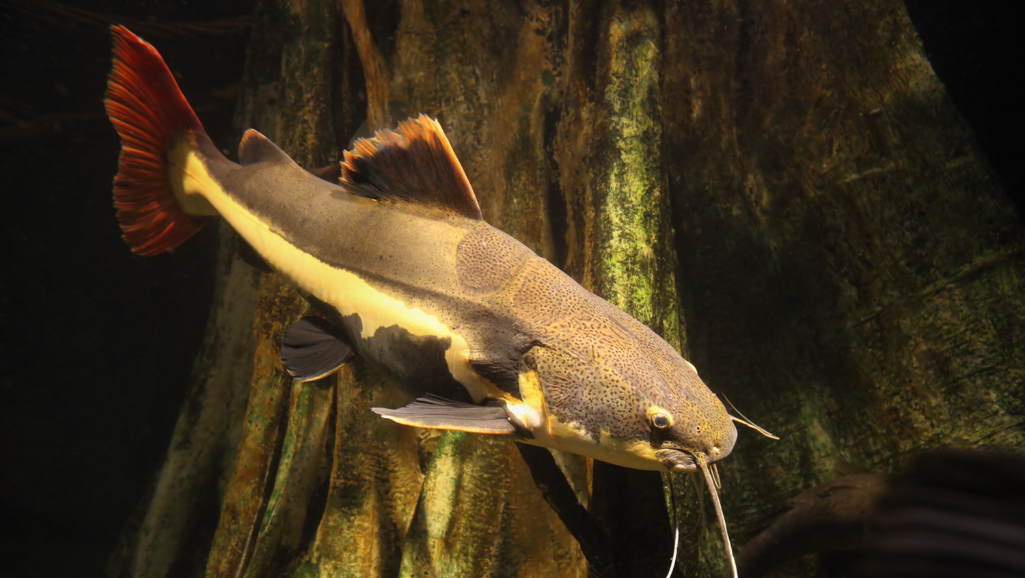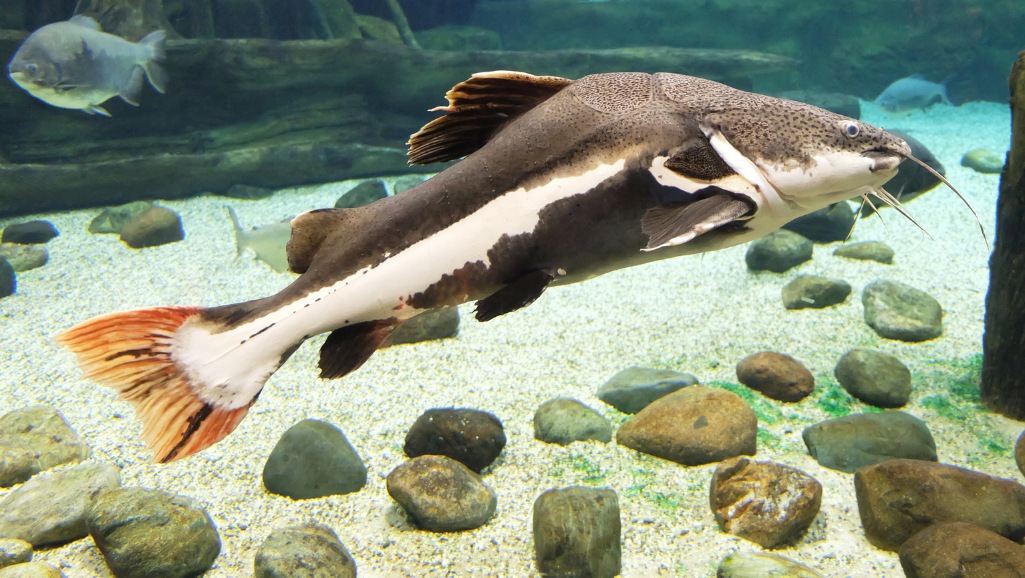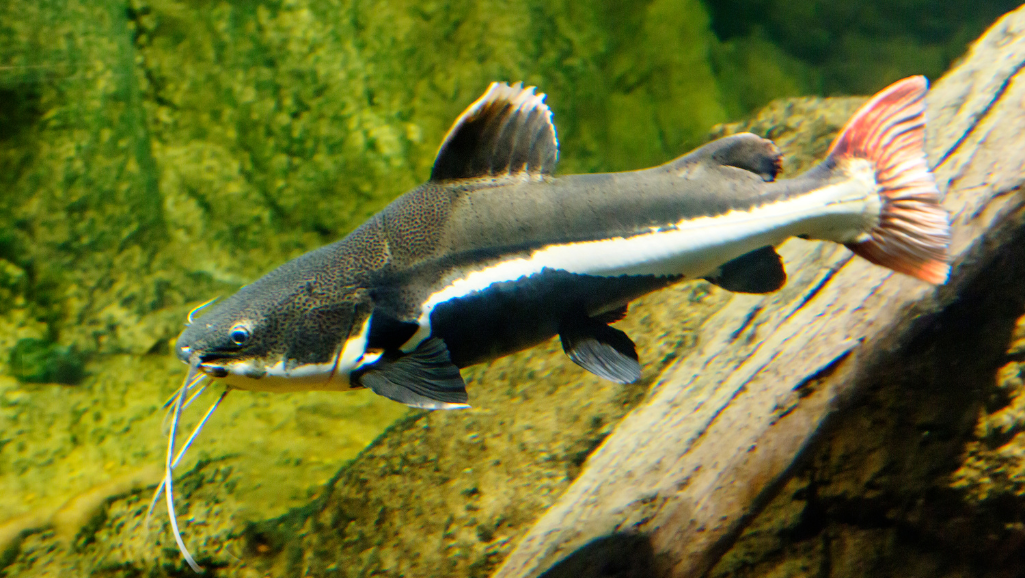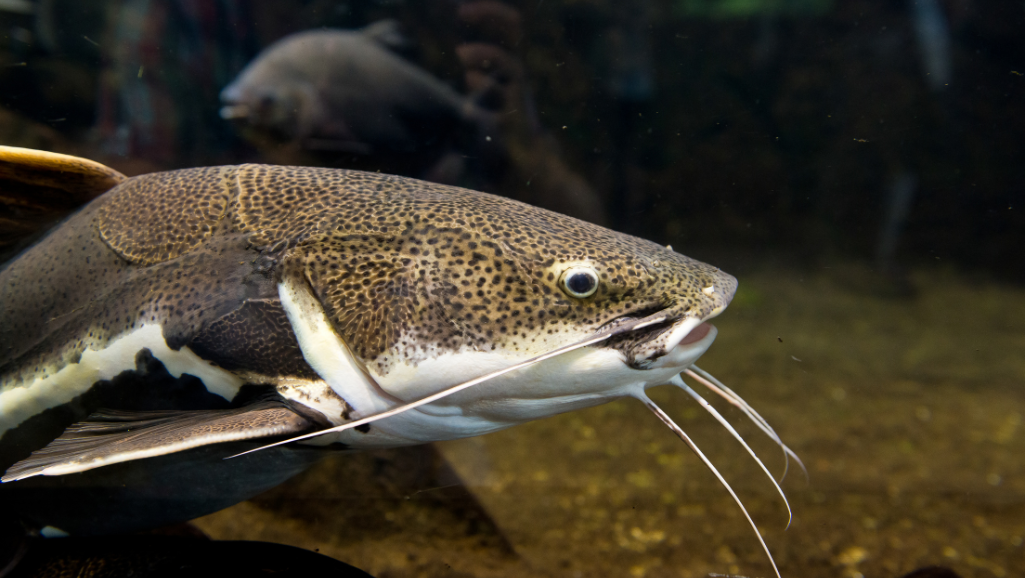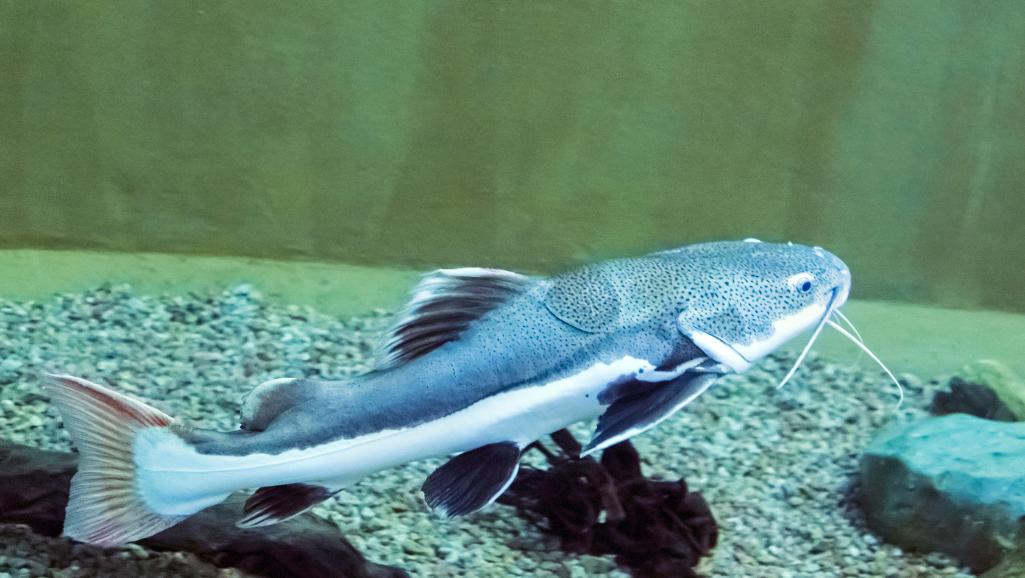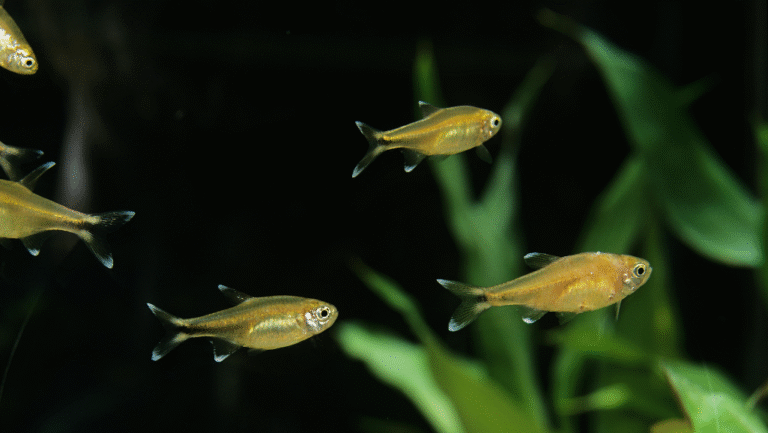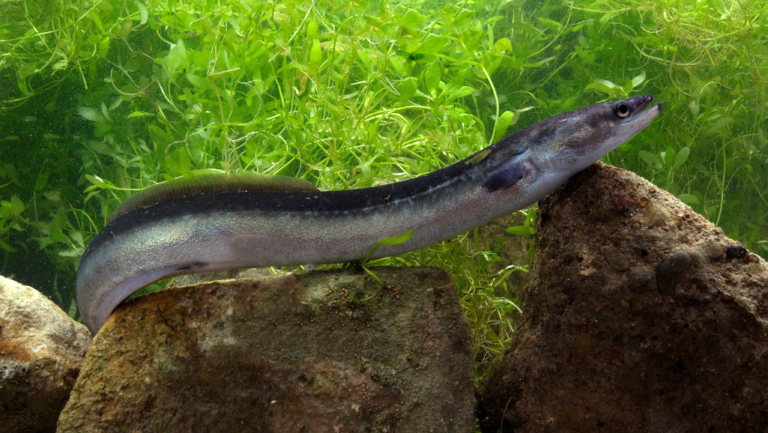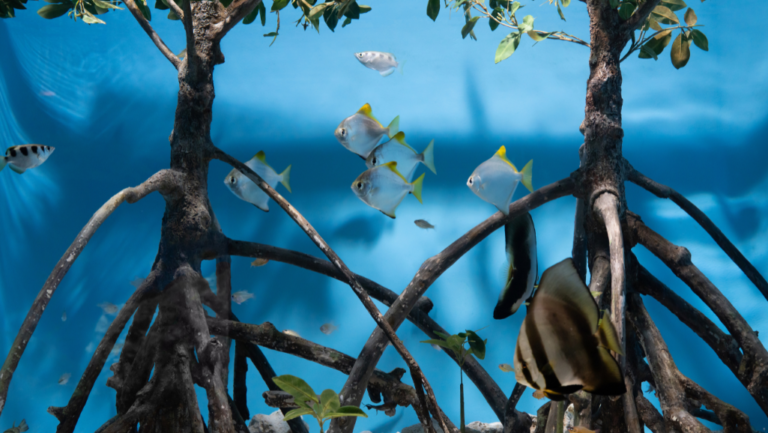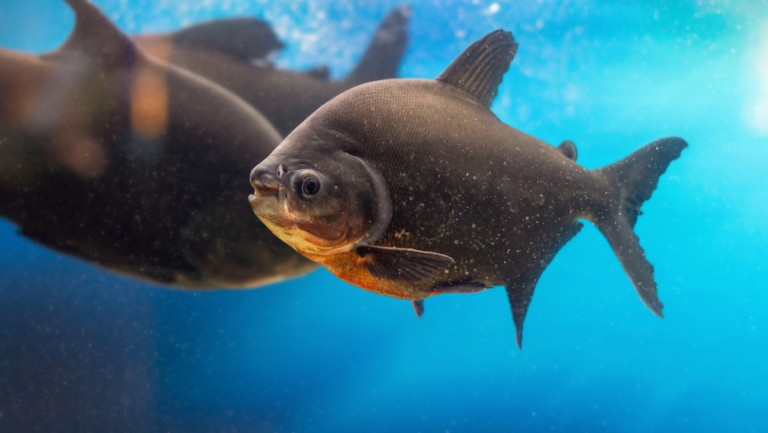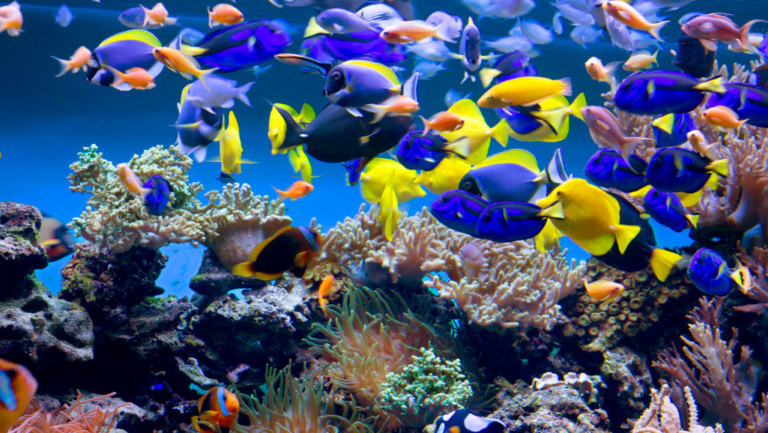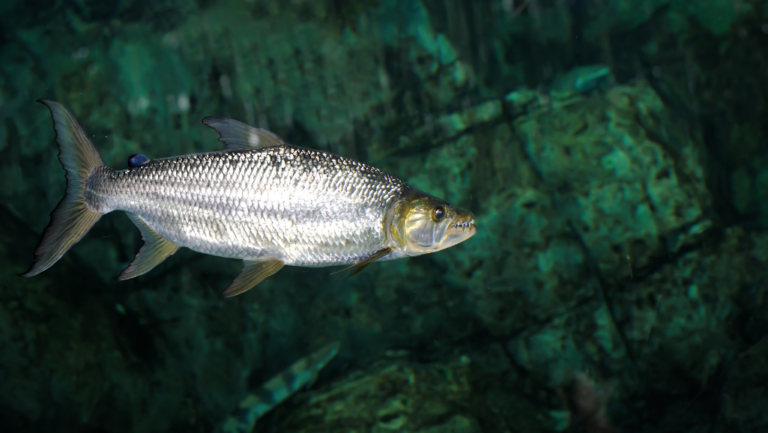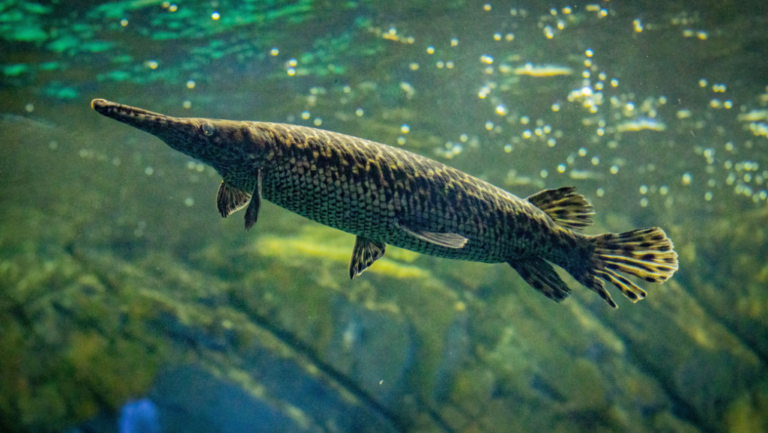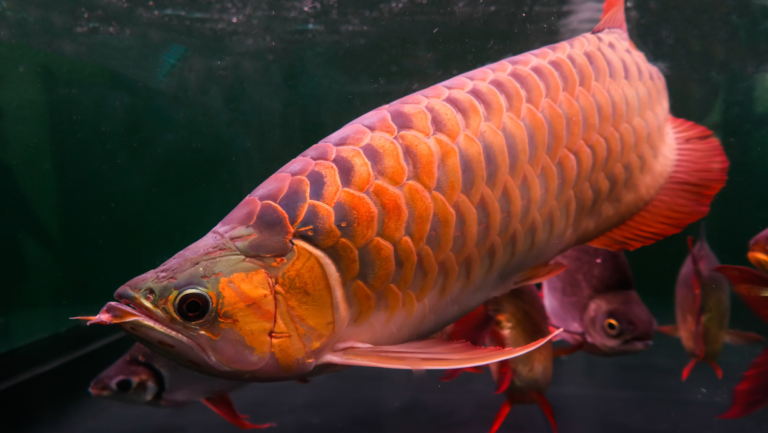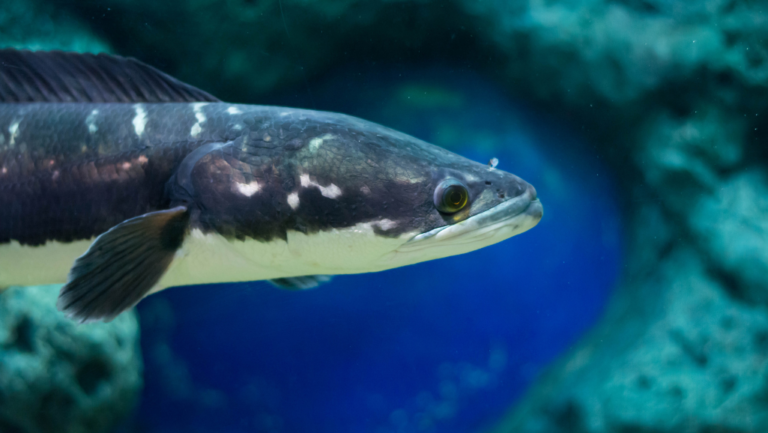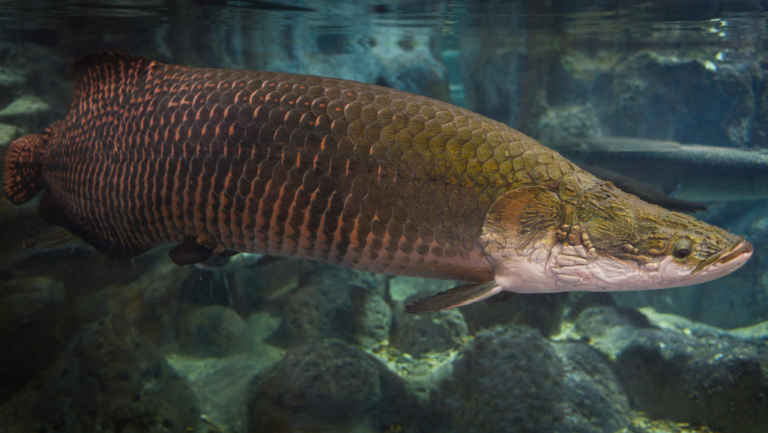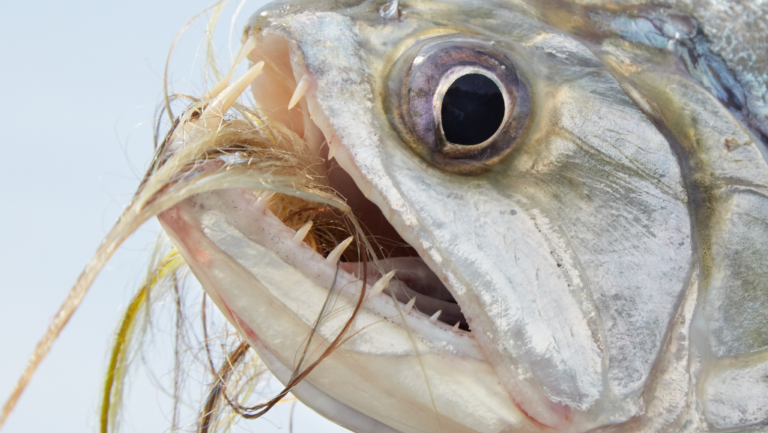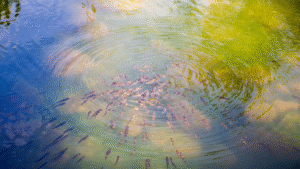For those interested in keeping larger freshwater fish, the Red Tail Catfish is a fascinating choice. They are known for their size and bright colors. These fish come from the Amazon and Orinoco rivers and need careful care.
Setting up a tank for a Red Tail Catfish is a big task. They grow fast, reaching 3-4 feet long. Knowing this helps in preparing a suitable home for them.
Before getting a Red Tail Catfish, it’s important to know their needs. They need a lot of water, at least 1,500 gallons. This is because they can live up to 15 years and need a good diet and clean environment.
Prices for Red Tail Catfish vary. You can find juveniles for $20 to $40, and adults for $200. While they make interesting pets, they are best for experienced aquarists.
Key Takeaways
- Understanding the substantial size of Red Tail Catfish is key for their care.
- They need a lot of space, at least 1,500 gallons, for their well-being.
- Feeding them a balanced diet helps keep them healthy.
- Red Tail Catfish are better for seasoned aquarists due to their complex needs.
- Large tanks are necessary for their growth and do not hinder it.
- They can be territorial, so choosing tank mates carefully is important.
- Proper care can extend their life up to 20 years.
Introduction to Red Tail Catfish
The Red Tail Catfish is a fascinating species that draws both admiration and careful thought from aquarium lovers. Known for their large Red Tail Catfish size and lively Red Tail Catfish behavior, these fish are a unique challenge for those wanting to create a piece of their Amazonian home in aquariums.
Overview of Species
Coming from the rich waters of the Amazon and Orinoco rivers, the Red Tail Catfish, or Phractocephalus hemioliopterus, is a symbol of the joys and challenges of keeping big tropical fish. Their ability to adapt is interesting, but they need specific, non-negotiable living conditions. You can learn more about their biology and behavior at the Wikipedia page on Red Tail Catfish.
Physical Characteristics
Renowned for their striking Red Tail Catfish appearance, these fish have a distinctive red tail fin against a dark, whiskered body. Their body shape, with long barbels and a strong, round form, is very attractive. This look makes them a highlight in aquariums and sparks conversations about their beauty.
Lifespan and Size
- The impressive Red Tail Catfish size can reach up to 130 cm (over 4 feet) in length in a suitable environment.
- Starting as small juveniles, often around 5 cm, these fish can grow up to 26 times their initial length.
- Despite their long lifespan, many do not live as long in captivity due to poor tank conditions.
Their large size and long lifespan require a deep commitment to a suitable habitat. For more information on their care, check out Aquajoy. They offer insights into keeping large, active fish species.
Natural Habitat of Red Tail Catfish
The Red Tail Catfish is a fascinating species from the Amazon and Orinoco river basins. These rivers are home to a unique ecosystem. The Red Tail Catfish plays a key role in the aquatic food web.
Geographic Distribution
The Red Tail Catfish comes from South America’s vast freshwater river basins. It thrives in diverse aquatic environments. Countries like Brazil, Venezuela, and Colombia are home to this species.
Preferred Water Conditions
Red Tail Catfish prefer slightly acidic to neutral waters. The temperature should be warm, between 70 to 80 degrees Fahrenheit. The pH levels should be between 6 to 7, similar to their natural habitats.
Diet in the Wild
In the wild, Red Tail Catfish eat a variety of foods. Their diet includes smaller fish, worms, crustaceans, and sometimes plants. This varied diet helps them grow and stay healthy.
Setting Up a Red Tail Catfish Tank
Starting a tank for a Red Tail Catfish needs careful planning. They are fascinating but need a special place to live. Knowing their needs is key to their happiness in your home.
Ideal Tank Size
Red Tail Catfish are big and love to swim. They need a lot of room to grow and move. A tank of at least 1,500 gallons is best. Even better is 2,000 gallons for full-grown fish.
This size tank lets them swim freely. It keeps them healthy and happy in your home.
Essential Tank Equipment
- Filtration System: A strong filter is needed to clean their waste. It keeps the water clear and healthy for the fish.
- Water Heater: Keeping the water between 68°F and 80°F is important. A good heater keeps the temperature steady.
- Tank Cover: Red Tail Catfish can jump. A strong cover stops them from getting out.
Substrate and Plants
Choosing the right substrate is important. Avoid gravel or small substrates that can be eaten. A fine sandy bottom or a bare-bottom tank is safer and easier to clean.
Plants are nice but not necessary. Make sure any decorations are big and can’t be swallowed or moved by the catfish.
Choosing tank mates for Red Tail Catfish is tricky. They are big and can be predators. Pick tank mates that are as big and strong as they are. This helps keep the tank peaceful.
Setting up a tank for a Red Tail Catfish is a fun but challenging task. It requires thinking about space, equipment, and how the tank’s ecosystem works. With the right setup, you can create a great home for these amazing fish.
Water Quality Requirements
Keeping the water quality right is key for Red Tail Catfish health. They are very sensitive to changes in their water. So, it’s important to watch and adjust Red Tail Catfish water parameters closely.
pH Level and Temperature
Red Tail Catfish need a pH of 6 to 8 and a temperature of 75 to 80 degrees Fahrenheit. These conditions help them feel at home. It’s important to test the water often to keep it just right.
Filtration Needs
Red Tail Catfish produce a lot of waste, so they need strong filters. Use canister filters, sumps, or HOB power filters to keep the water clean. These systems help keep nitrate levels well below 40mg/l. Learning about water chemistry and filters is important for maintaining water quality.
Regular Maintenance Tips
Keeping up with regular care is vital for a healthy aquarium. Change 20-25% of the water every week to control nutrients and remove bad stuff. Also, clean the substrate to avoid harmful waste buildup.
Following these Red Tail Catfish water parameters and maintaining water quality tips is good for the fish. It also makes your aquarium look amazing.
Feeding Your Red Tail Catfish
Knowing how to feed your Red Tail Catfish is key to their health and long life. This guide will help you feed them right, making sure they do well in their tank.
Best Food Options
Red Tail Catfish need a diet that’s close to what they eat in the wild. A good mix includes small fish, bloodworms, shrimp, and sinking pellets. These foods give them the proteins and nutrients they need to grow and stay healthy. Sometimes, adding cut-up meats can also be good, but only if it’s safe for fish.
Feeding Schedule Recommendations
- Young Red Tail Catfish grow fast and need to eat often, about every other day.
- Adults eat less, once a week, but this can change based on their activity and health.
- Watch how they eat and adjust the amount to avoid overfeeding.
Common Feeding Mistakes
- Feeding them food that’s too big can cause health problems.
- Using meat that’s too fatty can mess with their digestion.
- Not using sinking food is a mistake because they like to eat from the bottom.
By following these feeding tips, you can greatly improve your Red Tail Catfish’s care. This will help them grow and stay healthy in their tank.
Social Behavior and Compatibility
Understanding the Red Tail Catfish behavior and choosing the right Red Tail Catfish tank mates is key. These fish are big and have a unique red tail. They need special conditions to live well with other fish.
Aquarium Mates
When picking friends for the Red Tail Catfish, size and calmness matter most. Good tank mates are big and not aggressive. Good choices include large cichlids and other big catfish. It’s important to introduce new fish slowly to avoid stress.
Territoriality and Behavior
Red Tail Catfish like to stay at the bottom of the tank. They need lots of room to move and claim their territory. A big tank, at least 1,000 gallons, is best. This size helps them feel less aggressive and live better together.
Signs of Stress in Tank
It’s important to watch for stress signs in Red Tail Catfish. Look for fading colors, frantic swimming, or breathing at the surface. These signs mean the water might be bad or the tank mates are not good. Keeping the water clean and choosing the right friends helps them stay healthy.
Red Tail Catfish are big and have special needs. They can be a challenge but also very rewarding. If you’re up for it, be ready to work hard and learn about their unique ways. For more tips on creating a great aquarium, check out these resources.
Breeding Red Tail Catfish in Captivity
Breeding Red Tail Catfish is a challenging but rewarding task for fish keepers. These fish need specific conditions to breed and care for their fry. Knowing their needs is key, from breeding to fry care.
Breeding Behavior
Red Tail Catfish have unique behaviors during breeding, influenced by water conditions. In the wild, breeding is triggered by seasonal changes, hard to replicate in tanks. They are oviparous, with females laying hundreds to thousands of eggs, depending on their size and health.
Setting Up a Breeding Tank
To start breeding, a perfect environment is needed. The tank should have water temperatures between 75 and 80°F. The pH should match their natural waters for successful breeding.
Decor like large flat stones can help with spawning. The tank must be big, with a minimum size of 1000 gallons, due to the fish’s size.
Caring for Fry
After spawning, Red Tail Catfish fry care starts right away. Fry development is critical and needs a clean, stable water environment. They should be fed high-quality, sized food to support their growth.
Keeping water quality high and monitoring it regularly is vital. This prevents diseases that can be deadly at this stage.
The breeding process of Red Tail Catfish is complex, best for advanced aquarists or commercial setups. But, understanding their needs can lead to successful breeding. Their size, unique needs, and behavior make breeding them an exciting venture.
Common Health Issues and Treatment
Red Tail Catfish are tough but can get sick. They grow up to 20 inches and need a big space. Keeping their tank clean and watching for signs of illness is key.
Signs of Illness
Spotting sickness early is important. Look for changes in behavior, fin rot, and white spots. Missing water changes can make things worse.
Checking the water often helps catch problems early. This includes looking at nitrite, nitrate, and ammonia levels.
Preventative Measures
Keeping the water clean is the best way to prevent sickness. Change the water weekly and watch for any changes. A good diet and a calm tank also help.
Anchor worm infections need to be treated with iodine and seawater baths. This helps get rid of the worms.
Recommended Treatments
When a fish gets sick, the right treatment is needed. Use medicines like Erythromycin for bacterial infections. Follow the instructions carefully.
For fin rot, use Tetra Lifeguard® and Tetra Fungus Guard® for five days. Treat secondary infections too. For flukes, Tetra Parasite Guard® with praziquantel is key.
Fish lice and viral infections need special care. Remove parasites and support the fish with care. There’s no cure for VHS virus.
